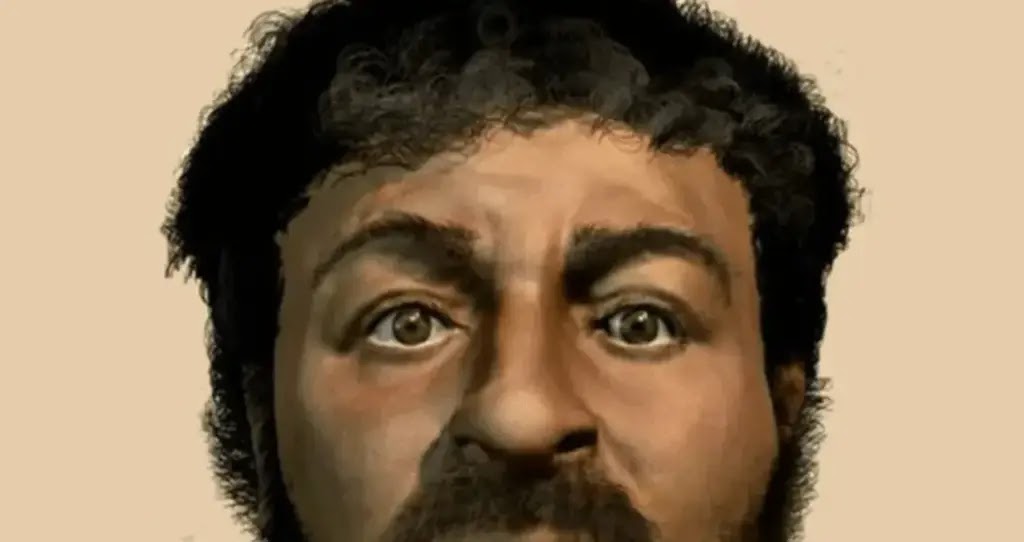For
centuries, the Catholic Church has portrayed Jesus Christ as a white, European
figure with striking blue eyes. However, scholars argue that the true
appearance of Jesus likely differs significantly from the idealized depictions
created by Renaissance painters.
Scholars
suggest that the Son of God bore a resemblance to the typical males from the
ancient region of Palestine: shorter in stature, muscular in build, and adorned
with coiling black hair.
Bas
Uterwijk, a Dutch photographer and digital artist, embarked on a journey to
uncover the age-old mystery of Jesus' appearance in a new light.

Equipped
with state-of-the-art technology, Bas embarked on a mission to craft an image
of Jesus that accurately reflected the historical context of his birthplace.
Leveraging Artbreeder's advanced machine-learning capabilities, he endeavored
to recreate the likeness of the Messiah.
As
expected, the image resulting from Bas's endeavors challenges the familiar
perception of Jesus' countenance.
Bas
adds, “The AI software harnesses the power of a neural network trained on many
photographic portraits and painted renditions of human faces.”
This
innovative application allows users to blend multiple facial references,
generating a synthesized image that aligns with the user's aesthetic
inclinations. Bas harnessed this capability to breathe life into both real and
fictional characters.
“I
intended to refine the ethnicity, fashioning a Middle-Eastern visage that
resonates with authenticity, drawing on a tapestry of artistic portrayals of
Jesus of Nazareth rooted in Byzantine and Renaissance traditions, including
Leonardo da Vinci’s ‘Salvator Mundi’ and the enigmatic Turin Shroud,” Bas says.
Although
Bas found the outcome to be a representation of the collective cultural
depiction, he desired greater historical accuracy.

“As
a result, I painstakingly adjusted the hair and beard lengths and styles to
reflect the norms of that era and region.” “I incorporated elements from Fayum
mummy portraits, pushing Renaissance aesthetics to the margins,” he continues.
Bas'
endeavors have produced more of an artistic interpretation of what Jesus might
have looked like rather than a strict pursuit of scientific precision.
Jesus
was born into a Jewish family in Bethlehem around 4 BC and spent his early
years there before eventually relocating to Nazareth, a town in Israel. This
narrative originates from the Bible.
Joan
Taylor, the author of "What Did Jesus Look Like," points out that
historical records indicate the inhabitants of Judea and Egypt possessed
olive-toned skin, dark hair, and brown eyes.
Each
individual harbors a preconceived notion of what Jesus looked like. Iconic
representations of Jesus permeate across cultures, leading to widespread
recognition. This familiarity often leads to immediate identification,
sometimes bypassing the necessity for deeper inquiry.
"Nevertheless,"
Taylor explains, "the iconic attributes commonly associated with Jesus –
such as flowing hair, robes, and a beard – originated in the 4th or 5th
centuries." In reality, Jesus' appearance was quite distinct from these
portrayals.
“He
wasn’t fair-skinned, and Europe wasn’t his home. He was a product of his time,
profoundly embedded in his geographical and historical surroundings.”
Joan
Taylor adds, “His complexion would have been darker, complemented by short,
raven-black hair – indeed, long hair was unusual during the first century.”

"His
visage likely bore a beard, and his feet would have been clad in sandals,"
Taylor, a specialist in the early history of Christianity, underscores. She
emphasizes that Jesus led a nomadic life, devoid of a permanent abode, relying
on the generosity of others and empathizing with the hardships of the less
privileged.
Historical
records, including accounts from scholars like Celsus in the 2nd century,
corroborate this portrayal of Jesus as a modest figure – appearing unkempt and
scruffy, akin to a wandering beggar.
As
Jesus once stated, “Foxes have homes, birds have nests, but the Son of Man has
somewhere to lay his head.” This matches the most significant explanation of
Jesus’ existence.
Interestingly,
Jesus' influence extended far beyond his immediate vicinity, touching people
across Europe and Africa. Richard Neave, an expert in forensic facial
reconstruction, was entrusted with envisioning the appearance of a
first-century Judean man resembling Jesus.
Neave's
meticulous reconstruction portrays a robust man with tanned skin, short hair,
and an olive complexion.
As
this project offers fresh perspectives on the multifaceted aspects of Jesus'
appearance, we encourage you to SHARE this post with your friends and family on
Facebook. Let's spark meaningful discussions about the historical intricacies
surrounding the iconic figure we hold dear.


Post a Comment